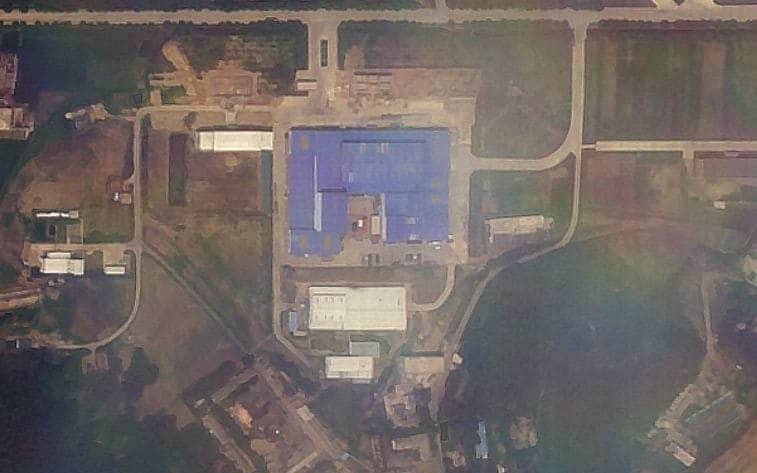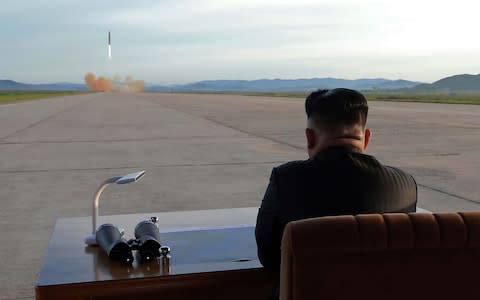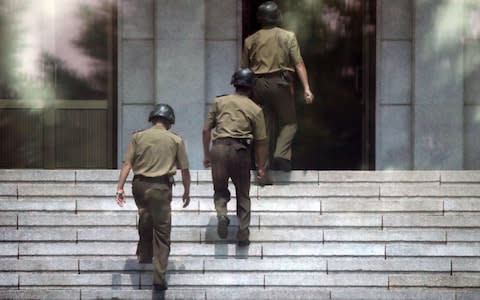North Korea renews work at long-range missile factory, US intelligence officials say

US spy satellites have detected renewed activity at the North Korean factory that produced the country’s first intercontinental ballistic missiles capable of reaching the United States, a senior US official said on Monday, in the midst of talks to compel Pyongyang to give up its nuclear arms.
Photos and infrared imaging indicate vehicles moving in and out of the facility at Sanumdong, but do not show how advanced any missile construction might be, the official told Reuters.
The Washington Post reported on Monday that North Korea appeared to be building one or two new liquid-fuelled intercontinental ballistic missiles at the large research facility on the outskirts of Pyongyang, citing unidentified officials familiar with intelligence reporting.
According to the US official who spoke to Reuters, one photo showed a truck and covered trailer similar to those the North has used to move its ICBMs. Since the trailer was covered, it was not possible to know what, if anything, it was carrying.
The White House said it did not comment on intelligence.
North Korean missile ranges
The evidence obtained this month is the latest to suggest ongoing activity in North Korea's nuclear and missile facilities despite talks with the United States and a June summit between North Korean leader Kim Jong-un and US President Donald Trump.
Mr Trump declared soon afterward that North Korea no longer posed a nuclear threat. Kim committed in a broad summit statement to work toward denuclearisation, but Pyongyang has offered no details as to how it might go about that and subsequent talks have not gone smoothly.
It was not the first time US intelligence clashed with the president's optimism.
In late June, US officials told US media outlets that intelligence agencies believed North Korea had increased production of fuel for nuclear weapons and that it did not intend to fully give up its nuclear arsenal.
Hwasong-15 ICBM - new North Korean missile
Mike Pompeo, US Secretary of State, told the US Senate Foreign Relations Committee last week that North Korea was continuing to produce fuel for nuclear bombs despite its pledge to denuclearise. But he insisted the Trump administration was still making progress in its talks with Pyongyang.
Joel Wit, a former State Department negotiator and founder of 38 North, a North Korea monitoring project, said it was unrealistic to expect North Korea to stop its programmes "until the ink is dry on an agreement."
That was the case with US negotiations with the Soviet Union during the Cold War, and more recently with Iran, "which continued to build more centrifuges capable of producing nuclear material even as it negotiated with the United States to limit those capabilities," Wit said.

The Sanumdong factory produced two Hwasong-15 ICBMs, North Korea’s longest-range missiles, but the US official noted that Pyongyang still had not tested a reliable re-entry vehicle capable of surviving a high-velocity trip through the Earth’s atmosphere and delivering a nuclear warhead.
It is possible, the official said, that any new missiles the North is building may be for further testing of such vehicles and of more accurate guidance systems.
“They seem to have figured out the engines, but not all the higher-tech stuff, and that might be what this is about,” the official said.
“What’s more, a liquid-fuelled ICBM doesn’t pose nearly the threat that a solid-fuelled one would because they take so long to fuel, and that’s something we almost certainly could see in time to abort a launch, given our assets in the vicinity.”

The reports come as generals from the rival Koreas met at their shared border for talks meant to ease a decades-long military standoff, Seoul officials said.
During the April 27 summit, the leaders of the Koreas agreed to disarm a jointly controlled area at Panmunjom, work to prevent accidental clashes along their disputed western sea boundary and halt all hostile acts. Since then, the Koreas dismantled their frontline propaganda loudspeakers, restored a military hotline and held their first general-level talks since 2007.
The meeting comes days after North Korea returned the reported remains of US war dead, the most recent sign of blossoming diplomacy after last year's threats of war.
The general-level officers were discussing ways to implement April's inter-Korean summit agreements on non-nuclear military issues, but no huge announcement was expected from the talks at the border village of Panmunjom. Some experts say South Korea can't agree on any drastic measures to reduce animosity unless the North takes serious nuclear disarmament steps.

